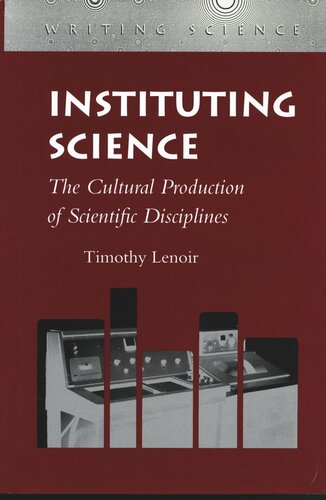

Most ebook files are in PDF format, so you can easily read them using various software such as Foxit Reader or directly on the Google Chrome browser.
Some ebook files are released by publishers in other formats such as .awz, .mobi, .epub, .fb2, etc. You may need to install specific software to read these formats on mobile/PC, such as Calibre.
Please read the tutorial at this link: https://ebookbell.com/faq
We offer FREE conversion to the popular formats you request; however, this may take some time. Therefore, right after payment, please email us, and we will try to provide the service as quickly as possible.
For some exceptional file formats or broken links (if any), please refrain from opening any disputes. Instead, email us first, and we will try to assist within a maximum of 6 hours.
EbookBell Team

0.0
0 reviewsEarly practitioners of the social studies of science turned their attention away from questions of institutionalization, which had tended to emphasize macrolevel explanations, and attended instead to microstudies of laboratory practice. Though sympathetic to this approach—as the microstudies included in this book attest—the author is interested in re-investigating certain aspects of institution formation, notably the formation of scientific, medical, and engineering disciplines. He emphasizes the manner in which science as cultural practice is imbricated with other forms of social, political, and even aesthetic practices. This book offers case studies that reexamine certain critical junctures in the traditional historical picture of the evolution of the role of the scientist in modern Western society. It focuses especially on the establishment of new disciplines within German research universities in the nineteenth century, the problematic relationship that emerged between science, industry, and the state at the turn of the twentieth century, and post-World War II developments in science and technology. After an Introduction and two chapters dealing with science and technology as cultural production and the struggles of disciplines to achieve legitimation and authority, the author considers the following topics: the organic physics of 1847; the innovative research program of Carl Ludwig as a model for institutionalizing science-based medicine; optics, painting, and ideology in Germany, 1845-95; Paul Ehrlich's "magic bullet"; the Haber-Bosch synthesis of ammonia; and the introduction of nuclear magnetic resonance instrumentation into the practice of organic chemistry.